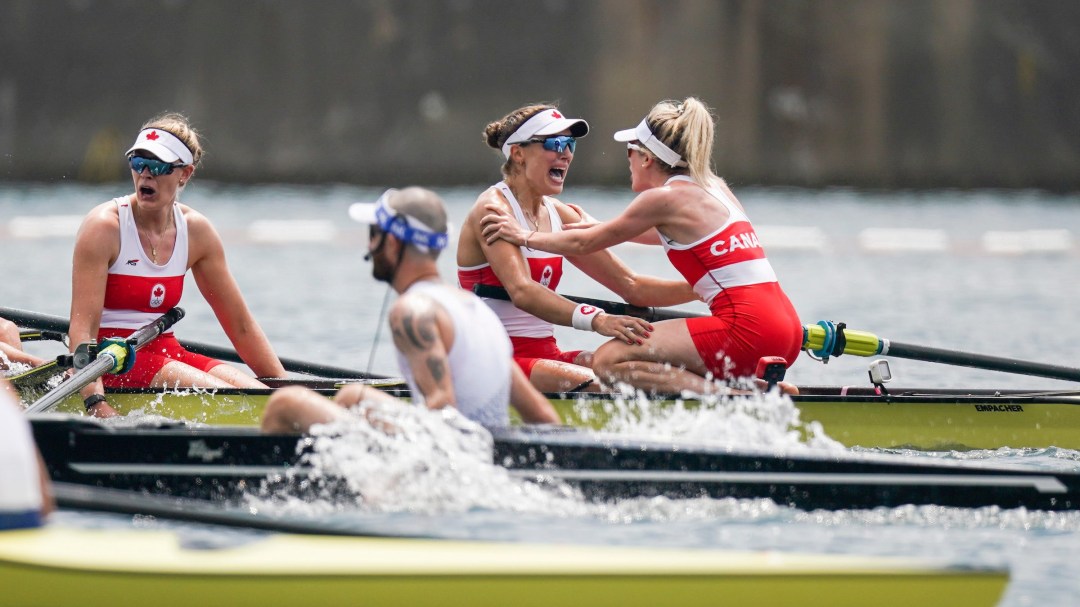A tale of two eights: Team Canada rowers on staying in sync, Olympic legacy, and fun
To a novice, the way that Team Canada rowers describe being in an eights crew–at least when it’s going well–makes it sounds like a magical, or almost transcendent experience. Eight men or women, all in complete sync, being propelled forward at greater and greater speeds by the oneness of their strokes.
This level of synchronicity requires not only being physically in tune with each other, but also having a shared mindset and bond that goes beyond the strokes in the boat and seeps into all the hours of training, travel, and down time that the athletes spend together.
“It’s really a special feeling of swinging together, when you get it right,” says veteran team member and three-time Olympian, Will Crothers. “You pull for the person next to you, work hard for the person next to you, and they do the same.”
That theme of the group over the individual, team glory over a solo spotlight, threads through discussion with members of both the men’s and women’s eights, in a way that often borders on philosophical.
Gavin Stone, who has transitioned to the eight after rowing in the coxless four in Tokyo, says that in rowing, the boat is always greater than the sum of its parts, but that feeling is magnified in the largest boats. “It doesn’t matter how big of a hero you want to be by working harder through the drive. It’s all about meshing everyone together.”
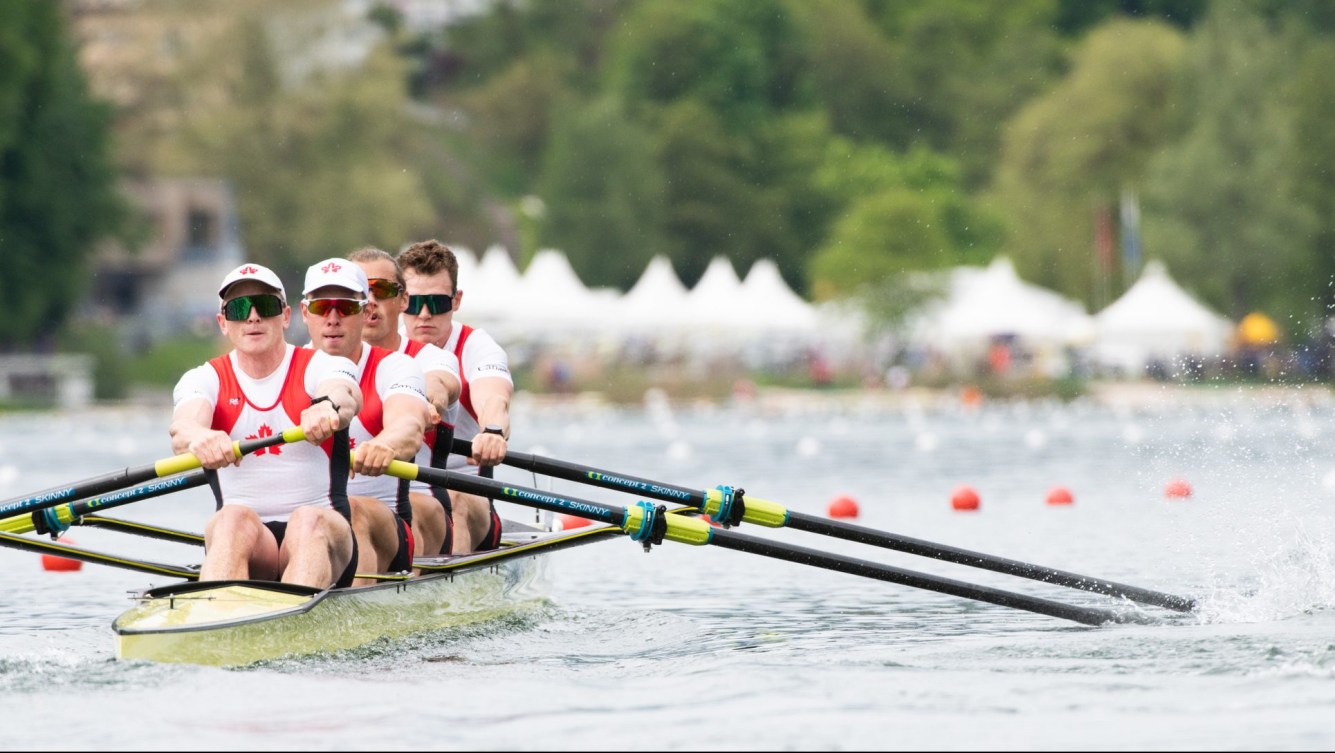
This isn’t to say that there is a loss of individuality when rowing as a team. Avalon Wasteneys, a member of the women’s eight who were crowned Olympic champions at Tokyo 2020, points out that the strongest boats are composed of a mix of different personalities, as well as technical strengths and weaknesses.
“I think what makes the eight so beautiful is that you sometimes just have this complete mix, and it’s everyone’s unique traits that make it work. At the end of the day, you want everyone rowing the same, but to do that you have to embrace some of those differences and use them to your advantage.”
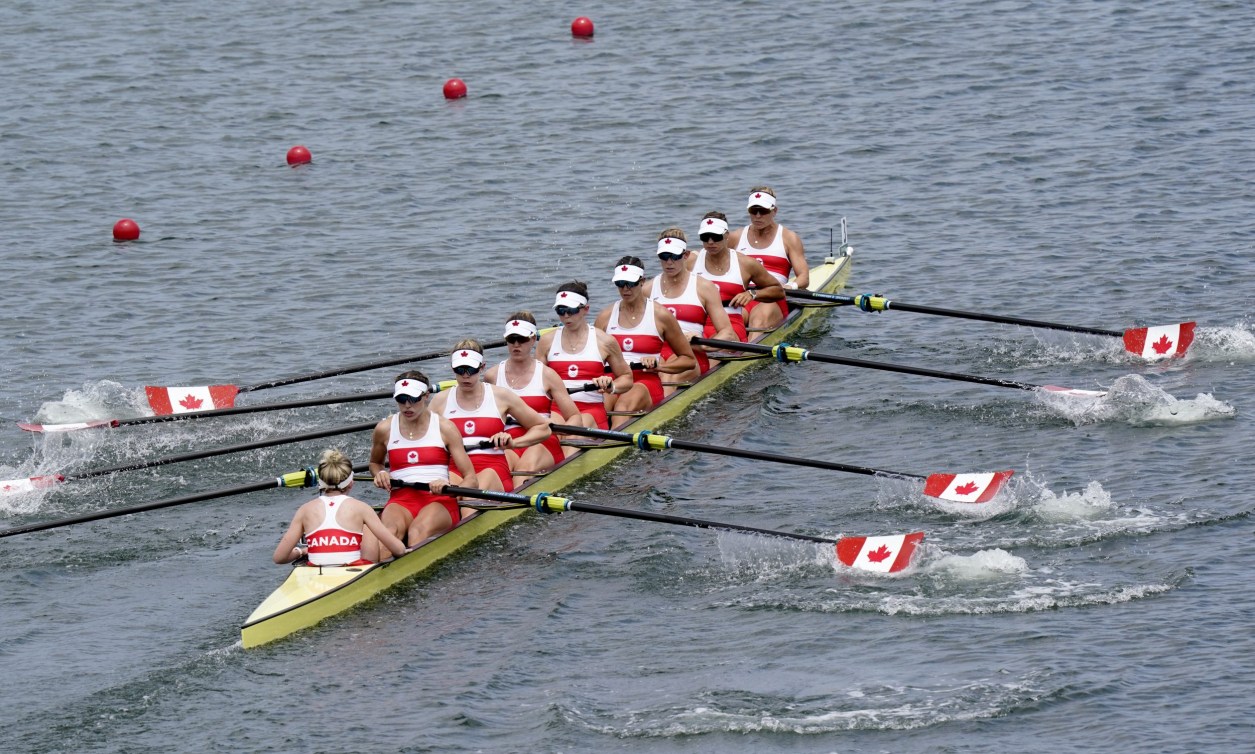
Kristen Kit, the coxswain of the golden boat in Tokyo, is particularly reflective on the sum of the boat’s parts, a fact that is perhaps unsurprising, given her role.
“Even if we had the exact same eight women come back to do things all over again, it wouldn’t be the same boat, because we all bring our own collective lived experiences with us,” she explains. “You can never replicate where people are in their life, their training, their health.”
The coxswain sits looking forward at one end of the boat and provides instruction during the race. Curtis Ames of the men’s eight describes their coxswain as “our brain in the race.” Kit offers the analogy that the women pulling the oars are the engine and she is the motor oil.
“A lot of people think I just sit in the front of the boat and yell, ‘Row! Row! Row!,’ but I’m predominantly a tactical voice with a focus on safety and steering,” she says.
A Canadian rowing legacy
Canadian rowing has well over a century of documented success. There is even a Canadian Heritage Minute about the “Paris Crew”–the four men from Saint John, New Brunswick who became Canada’s first world champions in any sport just days after Confederation in 1867.
In more recent history, Canada refined its reputation as a rowing nation in the 1980s and ‘90s, taking home six medals at the 1984 Olympics in Los Angeles, five medals (four of them gold) at Barcelona 1992 and five medals at the 1996 Olympic Games in Atlanta.
Crothers says that he grew up in what one could argue was the peak of the eights in Canada. “We had a really successful streak going into the Athens Olympics and then it was a disappointment. But those guys turned it around for 2008 [to win the gold medal]. So when I was in high school, everything was geared towards rowing eights.”
At London 2012, both the Canadian men’s and women’s crews won silver medals. But after those Games, Rowing Canada deprioritized the men’s eight program in an attempt to spread talent across smaller boats and win more medals. The gamble didn’t pay off.
During that time, Crothers says, some of Canada’s eights expertise faded. The job for the crew this year is to rekindle the fire around rowing eights in Canada, put the nation back on the map, and “go get that gold medal in Paris.”
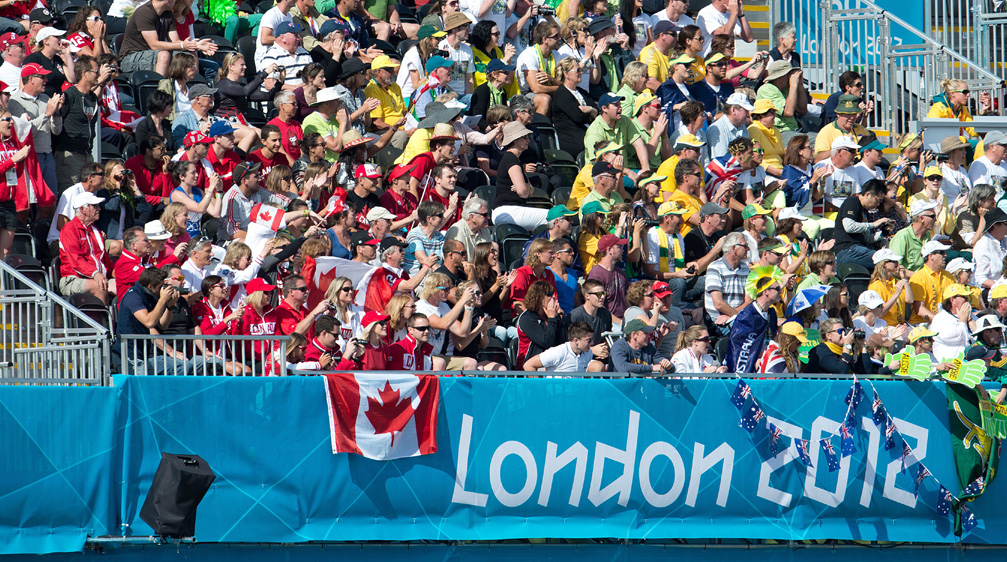
For the younger members of the men’s crew, the history of the eights inspired them as youth in the sport.
“The eights is kind of the ‘poster on the wall’ type of thing for me,” says Jakub Buczek, another Tokyo Olympian switching from the coxless four to the eight. “It’s always been the dream to race this event at the Olympics.”
Ames feels the same: “When I started rowing, Will was already that role model and type of athlete that I looked up to. And now I get to race with him and back him up on the course.”
For the women’s eight, it’s a bit of a different story. Team Canada won gold at Tokyo 2020. But with many members of that team retiring post-Games, it’s a new squad that will try to defend the title. One of those new faces is Jessica Sevick, whose journey to rowing has inspired her new teammates.
After a luge accident as a child left her with a traumatic brain injury, Sevick had to relearn many basic functions. The injury caused cerebellar atrophy, a condition which causes poor balance, something Sevick still works on in the boat. She competed at Tokyo 2020 in the double sculls, so she not only made the switch to a bigger boat, but also from sculling to sweeping, which are different rowing motions.
“Sometimes, when I don’t feel like training, I remind myself that ‘hey, Jess is going to show up to perform today,’ and it motivates me,” Kit says.
Kit and Wasteneys, returning members, say that it’s a clean slate heading into Paris. “We did a thing [in Tokyo]. It’s always ours,” says Kit.
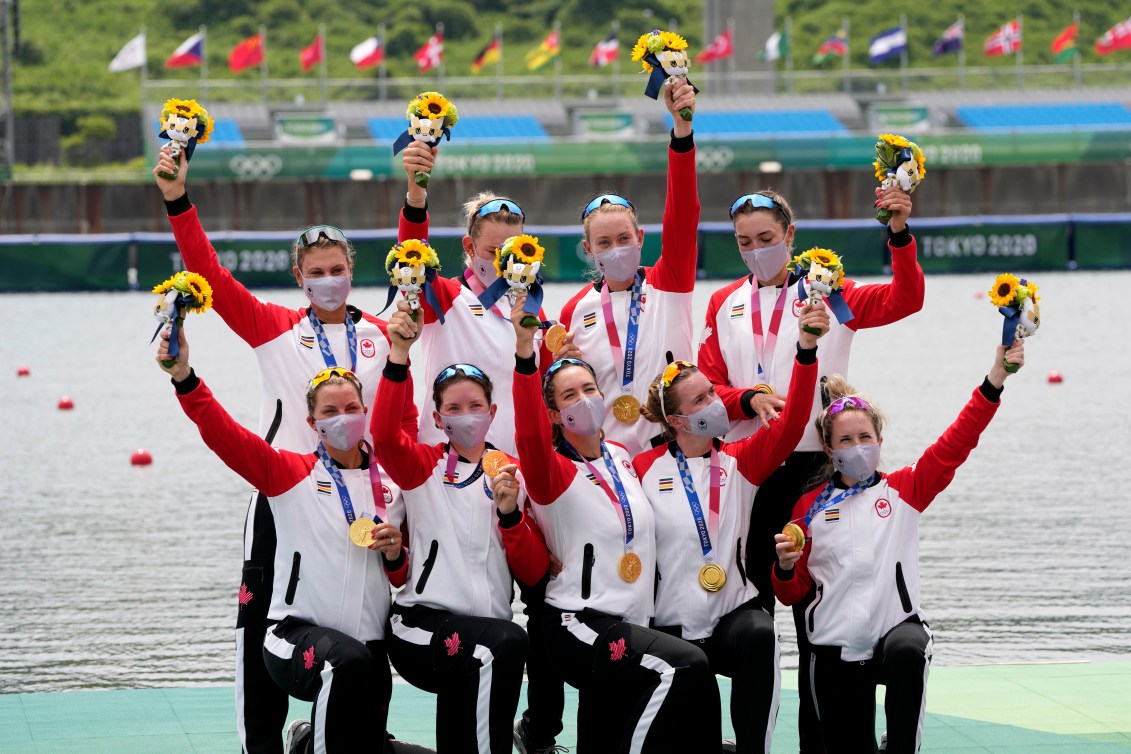
Wasteneys was curious as to whether she would feel pressure, especially moving into a veteran role on the team. “I think initially, I did feel pressure, but it really came from within,” she explains. “I don’t feel pressure to perform from my family [Wasteney’s mother and aunt also rowed for Team Canada], or from anyone watching. It’s more that I want to perform for my teammates, and allow them to experience what we did in Tokyo.”
Keep training fun…even if it’s type two fun
Across the board, all the rowers agreed that the key to longevity and success in the sport is to keep things fun.
“I think rowing has a bit of a stigma, and probably understandably so, that’s all work and no play,” Wasteneys says, “but some of my fondest memories and times I’ve laughed the hardest have been in the boat.”
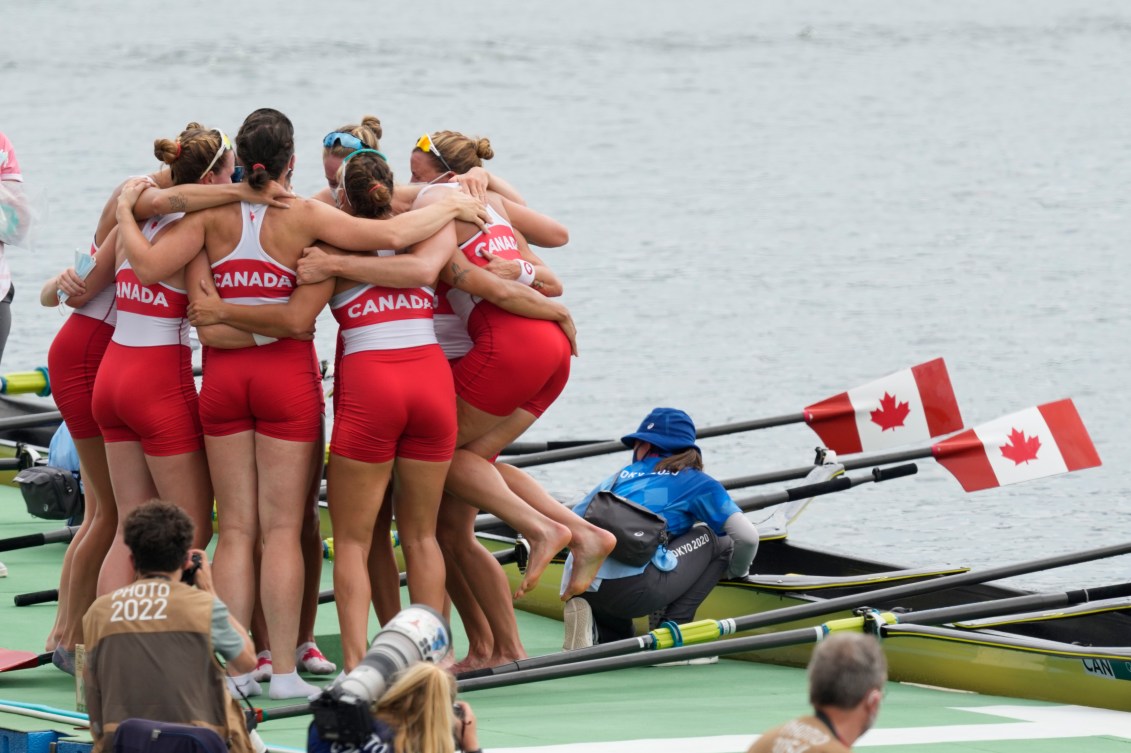
When you’re in conversation with rowers, you quickly understand that there’s fun–the sensation that everyone is familiar with–and then there’s type two fun. The latter is an experience that only becomes fun once it’s, well, over, Crothers explains. Regular fun might be closing down the complimentary hotel breakfast, while type two fun might be, say, getting left behind in a snowbank during a team nordic skiing session that got a little competitive (an experience Kit knows all too well) or a particularly hard practice.
But type two fun might also be an apt description of having both joy and grit in sport. As Stone says: “I think when you have fun, but also dedication, that’s when you go all the way.”

